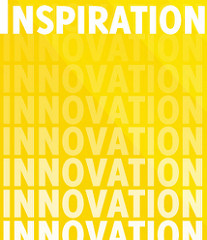The very first cast study mentioned at the end of Chapter 13 of The Global Educator was Case Study 4.1- Lucy Gray and Steve Hargadon: The Global Education Conference. According to our textbook, the conference was created by the two individuals. This conference is meant to bring together students, educators, and all different types of organizations in order to spread “cultural awareness and recognition of diversity and educational access for all” (The Global Educator, pg. 229). Ideas for the creation of said conference sparked at Edubloggercon. A gathering of educators sat together to discuss and create “a new paradigm for learning using emerging educational technologies” (The Global Educator, pg. 229). Steve Hargadon acted as the organizational leader of the group and would lead the events that would soon take place. Those who were involved in the commencement of this conference had stated that being apart of such a collaborative group of like-minded educators was exciting and refreshing. The video embedded is our Lucy Gray, one of the co-founders of this conference and she explains the conference more in-depth.
Next mentioned was Case Study 4.2- The “Learning2” Conference. Learning2 took a long time and a lot of hard work to productively come together to form what it is today. Jeff Utecht had a vision and worked hard to have others “jump on board.” Apparently, Jeff’s original ideas are still expanding to this day through the new non-profit organization status” (The Global Educator, pg. 231). Glocalization was an important step for Learning2 but also a difficult one. The original Learning2 event had helped organization and educators greatly expand their networks.
Thirdly, Case Study 4.3- Think Global School: Learning to Be Global While Living Globally. “THINK Global School (TGS) moves around the world and implements place-based learning to its fullest extent’ (The Global Educator, pg. 231). In other words, this “program” moves from place to place to help globally educate their own students. Think of it as a school on wheels! 12 teachers and approximately 60 students up and move to different environments each semester in order to broaden their learning capabilities. Also, this school is considered to be very technologically centered and each students and teacher has a Macbook, Ipad and Iphone. I thought this was the most interesting study, because it is just so unique. A school that moves each semester to a completely new place? How exactly does that work? How are kids able to up and leave their families, or do their families relocate for the semester also?
The fourth study, Case Study 4.4, is entitled Peggy George and Wesley Fryer: The K12 Online Conference. “The k12 Online Conference is a free, online, annual event and is run totally by volunteer educators” ( The Global Educator, pg. 233). I think it is totally amazing that individuals are willing to give up their free time and extend their abilities in the form of volunteer education. The events purpose is to bring individuals together so that everyone can share ideas and new modes of virtual learning. The video they had used in their conference have become popular in the educational archives of professional learning. These videos inspire discussion on ideas for future learning and teaching opportunities. The video embedded is one of the presenters who participates in the K12 Online Conference, just to give an example of the formatting of the conference and what it is like.
Next is Case Study 4.5- Our Global Friendship. “Our Global Friendship is a small virtual community of global collaborative educators” (The Global Educator, pg. 233). Its purpose is to encourage the practice of learning both with and from all the other educators in the world. Its goals are to “bring together a disparate group of educators who, through their passion and vision, design and implement global projects that often include many other educators and classrooms” (The Global Educator, pg. 233). Although this case is amazing, they had describe it are highly unique and futuristic. When reading this case study, my very first thought that that this sounds like all the other studies. They all share a common goal of bringing educators together.
For this reason, I am going to stop giving the synopsis for each Case Study, just so that it does not become overly repetitious. I highly suggest to those who have not heard of these case studies before, to check them out, either online or through the use of the Global Educator textbook. I also suggest reading the other 5 case studies, because they are all inspiring and interesting. As future educators, or if you are already an educator, I think it is our job to be highly conscious of everything that happens in the educational community.
 I feel as though, as a class, we can all agree how much we have learned from taking this course. I have be introduced to ideas that never once crossed my mind. I will be honest, before taking this class, I truly question my ability to become a teacher. I never knew if I would be good at it. With the work that we do in the class, my opinion has completely changed. Each and every weekly activity we participate in, has truly helped me feel more confident as a future educator. Making presentation and lesson plans allowed me to prove to myself that I can do this! Focusing on presentations for the moment, I wanted
I feel as though, as a class, we can all agree how much we have learned from taking this course. I have be introduced to ideas that never once crossed my mind. I will be honest, before taking this class, I truly question my ability to become a teacher. I never knew if I would be good at it. With the work that we do in the class, my opinion has completely changed. Each and every weekly activity we participate in, has truly helped me feel more confident as a future educator. Making presentation and lesson plans allowed me to prove to myself that I can do this! Focusing on presentations for the moment, I wanted



 help for her husband who is a dreamer.
help for her husband who is a dreamer.
